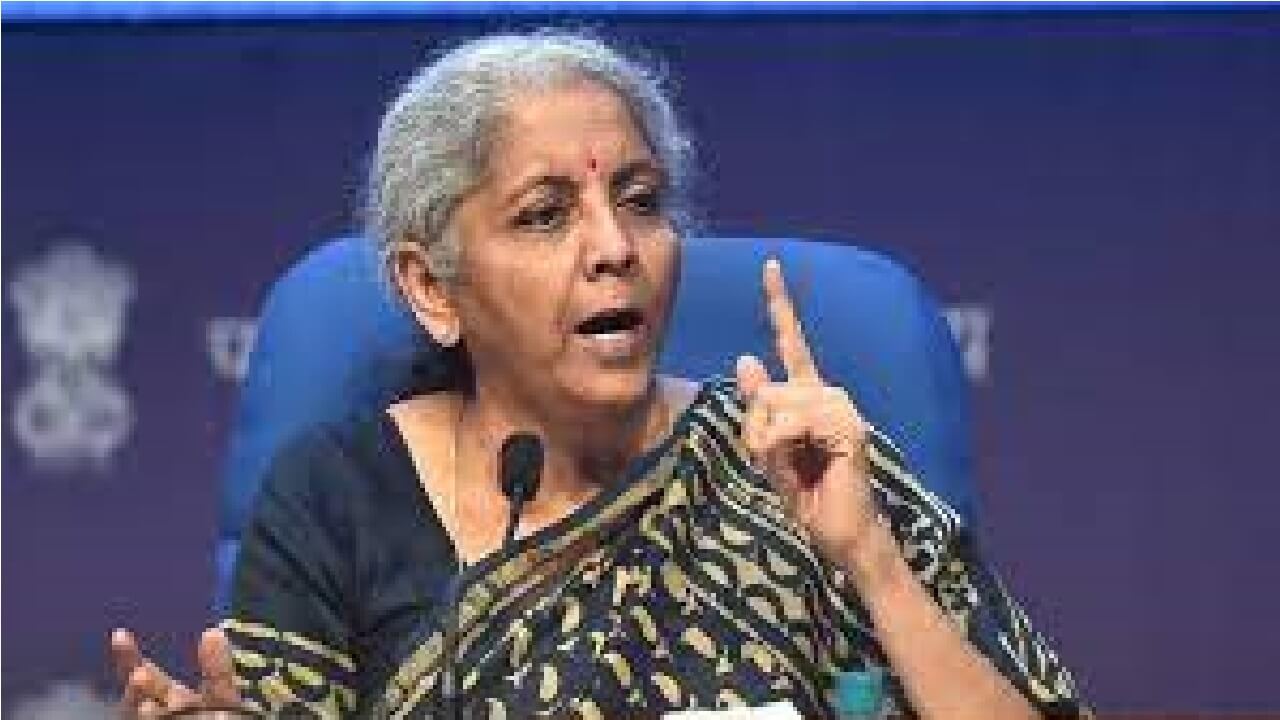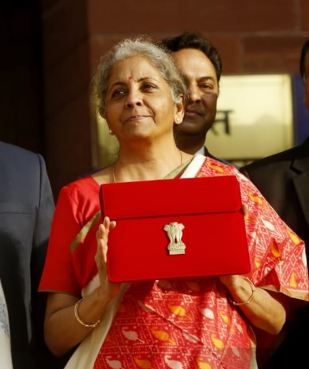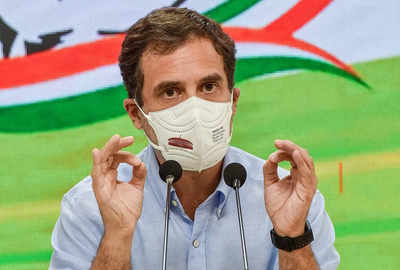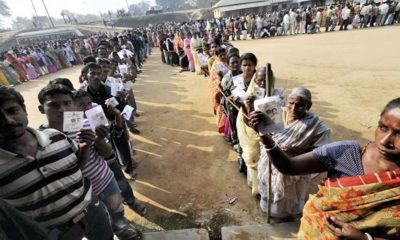India News
Economic Survey 2022: Why is it presented a day before Union Budget? What changes India will witness in this year’s Economic Survey? All you need to know
Union Finance Minister Nirmala Sitharaman will table the Economic Survey for 2021-22 today. Do you know why it is not presented with Union Budget? Do you know what the Economic Survey 2022 is all about? Read here.
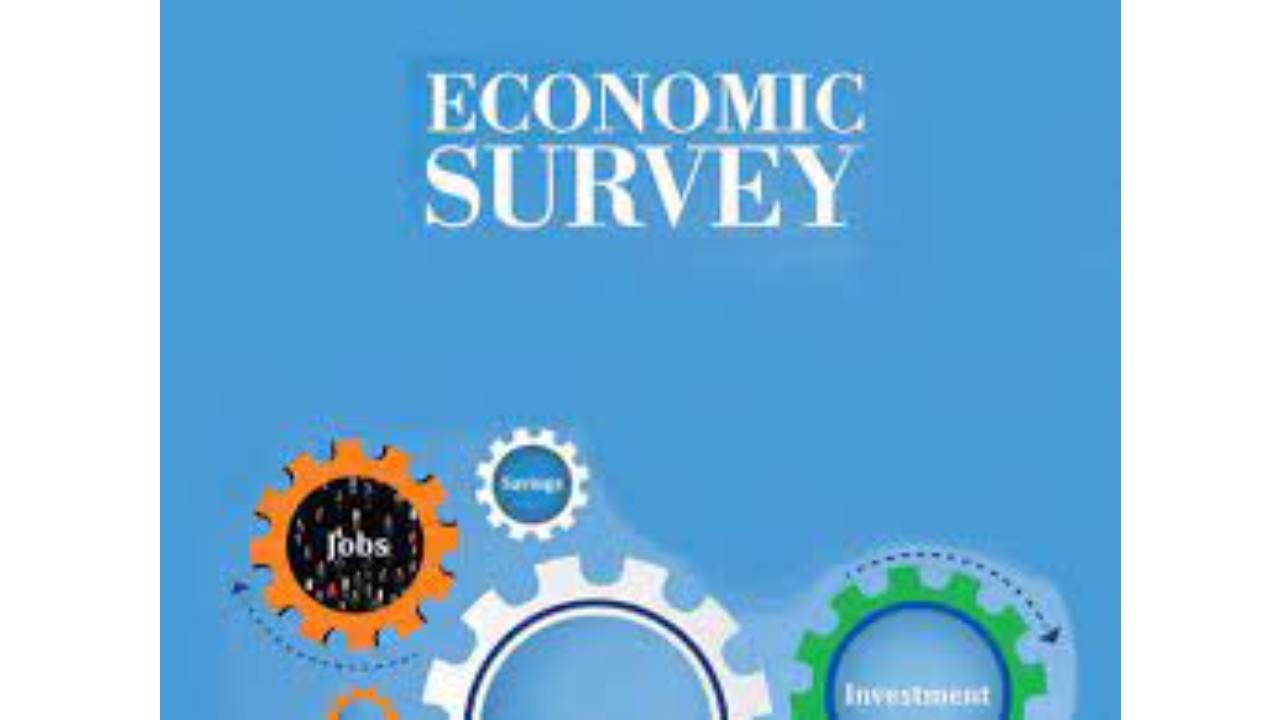
Union Finance Minister Nirmala Sitharaman will table the Economic Survey for 2021-22 today, January 31, in the Lok Sabha. The Economic Survey will be presented in the Lok Sabha after the president’s address to both houses of Parliament. The Economic Survey is released a day before the Union Budget is presented in Parliament.
This year’s Economic Survey is expected to predict a growth rate of around 9 percent for the next fiscal year, FY22-23. Last year, the Economic Survey for 2020-21 predicted that the current fiscal year, which ends on March 31, 2022, will see a GDP growth of 11 percent.
What is the Economic Survey?
The Economic Survey is a financial document that is presented annually to review the economic development in the country over the past financial year. The survey provides detailed statistical data of all the sectors including agricultural, industrial, employment, industrial production, exports, prices, among others. Besides this, it also evaluates changes in other areas of the Indian economy, such as the money supply and foreign exchange reserves.
The Economic Survey is divided into two parts- Volume 1 and Volume 2. Volume 1 is about the economic challenges that the country is facing whereas Volume 2 gives an analysis of the previous fiscal year.
Who prepares the Economic Survey?
The Economic Survey is prepared by the Economics Division of the Department of Economic Affairs of the Finance Ministry under the overall guidance of the Chief Economic Adviser (CEA). It is only released after it is approved by the Finance Minister.
What changes India will witness in this year’s Economic Survey?
CEA generally prepares the document but this year’s Economic Survey has been prepared by the principal economic adviser and other officials as the post remained vacant following Krishnamurthy Subramaniam’s term that ended in December. This will be the first Economic Survey to be presented by V Anantha Nageswaran. The government has appointed economist V Anantha Nageswaran as the next CEA just days before the release of the Economic Survey.
This year the Economic Survey is likely to be presented in a single volume. Volume 1 which tells about the economic challenges that the country is facing may not be presented in Parliament today. Volume 2 contains a sectoral analysis of the economy of the previous fiscal year that will be tabled today at 3:45 pm.
What is the significance of the Economic Survey?
Union Ministry of Finance presents the Economic Survey every year. The Economic Survey is regarded as the flagship annual document of the Finance Ministry that provides a summary of all the economic development across the country that happened in a particular financial year. It not only examines the country’s macroeconomic status over the prior fiscal year but also provides an outline for the upcoming fiscal year.
Why Economic Survey is presented a day before Union Budget and not on the same day?
Economic Survey maps out a roadmap for India’s economy going into the next financial year. The reason for presenting an Economic Survey is to review the overall economic performance of the country during the year in order to give a better understanding of the Union Budget.
Read Also: Indian Railways cancel 447 trains, reschedule and divert 18 trains, check the full list here
The survey is largely used to determine the country’s priorities for the coming fiscal year, as well as which sectors in the Union Budget require additional focus. In 1964, the Economic Survey was separated from the Budget and released ahead of time to provide a context of the latter.
When was the first Economic Survey of India presented?
In 1950-51, the first Economic Survey was presented. It was introduced with the Union Budget up to 1964. From 1964 onwards, it has separated from the Union Budget and presented a day before.
2024 Lok Sabha Elections
Bihar: Election Commission extends voting timings for 4 Lok Sabha seats due to heatwave
The voting period has been extended by two hours for a total of 299 polling stations
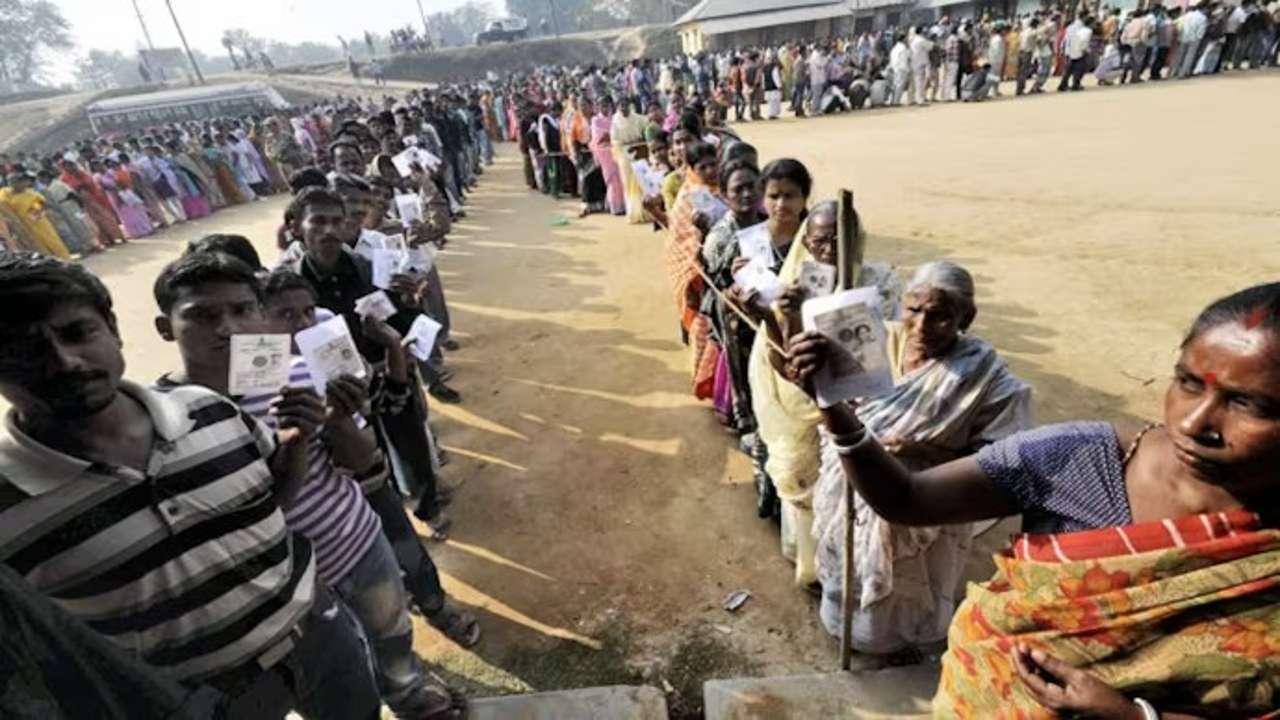
In accordance to the rising temperatures in Bihar, the Election Commission of India (ECI) has extended the voting hours for the upcoming three phases of the parliamentary polls at 1,700 polling places spread across four parliamentary seats, Banka, Madhepura, Khagaria, and Munger. The extension of the voting hours was announced by poll officials on Wednesday.
Polling generally takes place from 7 a.m. to 6 p.m. in most parts of the country, however, in certain isolated locations and in constituencies impacted by left-wing extremism, polls close two hours early to allow polling parties to move around easily.
The ECI gazette notification said the dates for the parliamentary constituencies of Banka (Katoria and Belhar assembly segments), which will hold elections on April 26, Madhepura (Mahishi assembly segment), Khagaria (Simri Bakhtiyarpur, Alauli, and Beldaur assembly segments), where voting will take place on May 7, and Munger (Suryagarha assembly segment), which will hold final phase elections on May 13, have been extended.
The voting period has been extended by two hours for a total of 299 polling stations in Simri Bakhtiarpur, 191 polling stations in Belhar AC of Banka, 172 polling stations in Katoria Assembly Constituency (AC) and 191 polling stations in Belhar AC of Banka, 207 booths in Mahishi AC of Madhepura seat, and 230 polling stations in Suryagarha AC of Munger.
In an effort to boost voter turnout, which fell to 49.26% in the first phase of polling on April 19 in Aurangabad, Gaya, Nawada, and Jamui from 53.47% in 2019 by 4.21%, the timing has also been extended.
Meanwhile, during the course of the next several days, temperatures in the southern states, namely Kerala and Karnataka, are predicted to rise by 2-3°C. In Southern Karnataka, where up to 14 constituencies are scheduled to vote in Phase 2, a heatwave warning has been issued. It is predicted to affect the districts of Tumkur, Davangere, Vijayapura, Yadgir, Koppal, Bagalkote, Kalaburgi, Raichur, Ballari, Chitradurga, Kolar, Chikkaballapura, Gadag, and Davangere.
The EC stated that a likely factor influencing voter turnout is the increase in temperature.
India News
Landslide hits Arunachal Pradesh, highway linking Indo-China border affected
Arunachal Pradesh Chief Minister Pema Khandu said that instructions have been given for the restoration of connectivity at the earliest
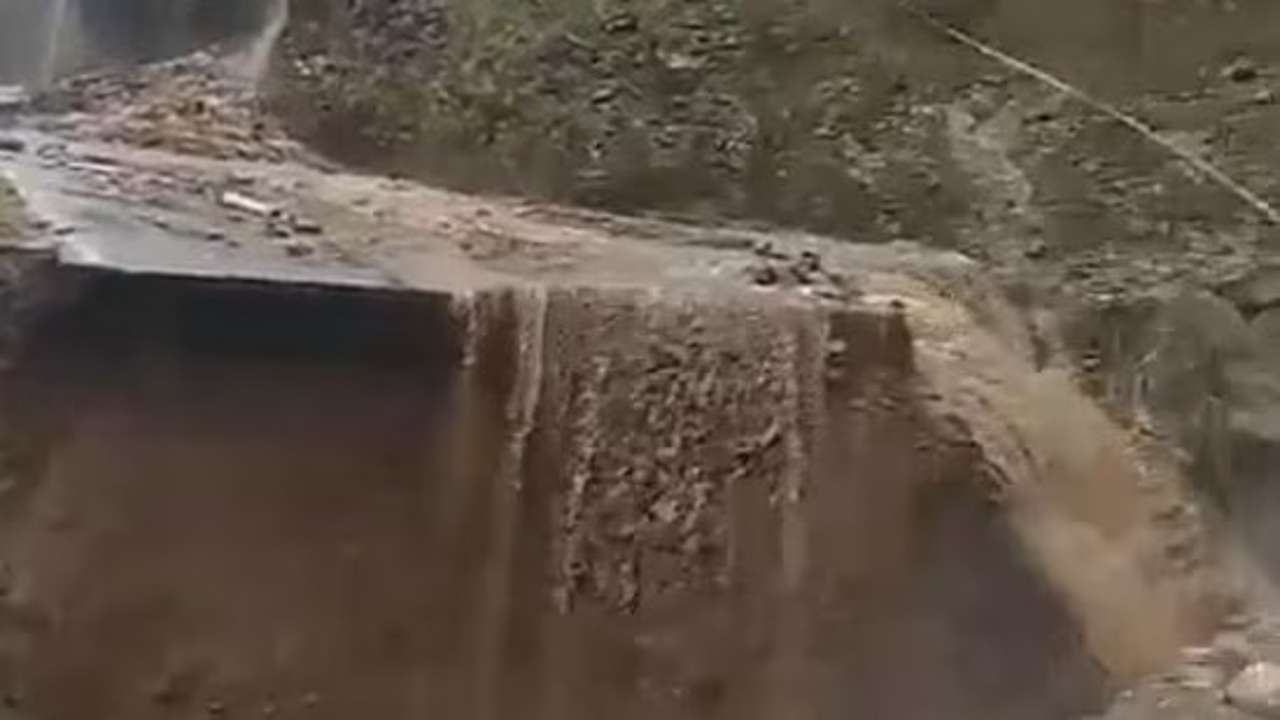
Arunachal Pradesh got hit by a massive landslide on Thursday, which destroyed a section of a roadway connecting the border with China. Additionally, it is the only path that links the district of Dibhang Valley with the rest of India.
Based on initial reports, there has been extensive road damage along the Roing Anini Highway between Hunli and Anini.
Arunachal Pradesh Chief Minister Pema Khandu expressed concern over the incident.
Taking to social media X, formerly Twitter, he tweeted, he is disturbed to hear that the massive damage to the highway between Hunli and Anini is causing commuters’ inconvenience. Since this road links Dibang Valley to the rest of the country, instructions have been sent out to restore connectivity as soon as possible.
The incident occurred as a result of the nonstop rain. The district government announced that the Roing Anini highway restoration project would require at least three days to inhabitants of Dibhang Valley.
Videos showed a section of the roadway was missing, making it hard for vehicles to cross throughout and creating problems for the security services and the people, who saw the highway as a lifeline in this difficult area.
In order to fix the damaged sections of the highway, the National Highways and Infrastructure Development Corporation Limited (NHIDCL) has mobilized resources. There is no shortage of food or other necessities at the moment.
All residents of Dibang Valley are notified that on April 24, 2024, an important portion of NH 313 connecting Anini to Roing washed away due to persistent rain in the district. It is estimated that restoration will take at least three (three days). Therefore, until the road is repaired and the rain returns to normal, all worries are advised, the statement said.
Meanwhile, Arunachal Pradesh’s West Kameng region was recently rocked by an earthquake of magnitude 3.0 on April 20, according to data from the National Centre for Seismology (NCS). The epicentre was located five kilometers below sea level at latitude 27.39 and longitude 92.68.
India News
Tamannaah Bhatia summoned in illegal IPL streaming app case, to appear before cyber cell on April 29
Actor Tamannaah Bhatia has been summoned for allegedly promoting the viewing of the IPL matches on the Fairplay betting app.

Actor Tamannaah Bhatia has been summoned by the Maharashtra Cyber Wing to appear for questioning for the illegal streaming of the 2023 Indian Premier League on Fairplay App, a sister app of the Mahadev betting app.
On April 29, the actor is scheduled to appear before the Cyber Cell for interrogation.
In the same case, rapper and singer Badshah was questioned earlier. In addition, actor Sanjay Dutt was also summoned in the same case this week on Tuesday, but he has requested an extension of time to appear before the department.
Even though the Fairplay app lacked official broadcasting rights, all of these actors and singers encouraged users to watch the Indian Premier League, which cost official broadcasters a lot of money.
An FIR was filed in September of last year in response to a complaint made by Viacom18, the company that owns the intellectual property rights (IPR) for streaming Indian Premier League games. According to the complaint, Viacom18 lost over Rs 100 crore as a result of the betting app Fair Play platform illegally streaming IPL matches on their platform.
Many celebrities, including Badshah, Sanjay Dutt, and Jacqueline Fernandez, were summoned for questioning after the filing of the FIR. An employee of the betting app was taken into custody in December of 2023.
A platform for betting exchange, FairPlay provides a large selection of sports and entertainment betting for leisure players.
The most popular sport on FairPlay, according to the app’s website, is tennis, football, and cricket.
According to the website, FairPlay streams every sporting event live so that users can watch and win at the same time.
Actors Ranbir Kapoor and Shraddha Kapoor, who had starred in advertisements for the Mahadev betting app, made news last year when the Enforcement Directorate (ED) called them in for interrogation.
-
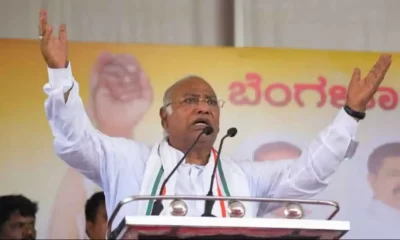
 2024 Lok Sabha Elections18 hours ago
2024 Lok Sabha Elections18 hours agoMallikarjun Kharge vows to continue politics till his last breath to defeat BJP
-

 2024 Lok Sabha Elections21 hours ago
2024 Lok Sabha Elections21 hours agoPM Narendra Modi slams Congress over Sam Pitroda’s inheritance tax remarks, accuses Congress of intending to impose higher taxes
-
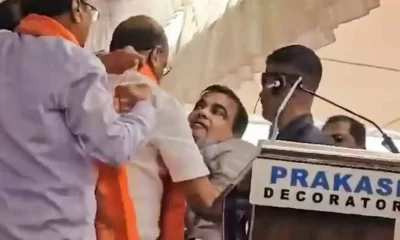
 2024 Lok Sabha Elections19 hours ago
2024 Lok Sabha Elections19 hours agoNitin Gadkari says he’s better now after collapsing at election rally in Maharashtra’s Yavatmal
-

 Trending23 hours ago
Trending23 hours agoA waiter’s life: Social media users go emotional on watching viral video
-

 Entertainment20 hours ago
Entertainment20 hours agoMadhuri Dixit, Karisma Kapoor recreate Dil To Pagal Hai dance battle on Dance Deewane
-

 Entertainment47 mins ago
Entertainment47 mins agoBollywood stars Salman Khan, Alia Bhatt, Rekha, Sonakshi Sinha, Aditi Rao Hydari attend Sanjay Leela Bhansali’s Heeramandi premiere
-

 India News2 hours ago
India News2 hours agoTamannaah Bhatia summoned in illegal IPL streaming app case, to appear before cyber cell on April 29
-
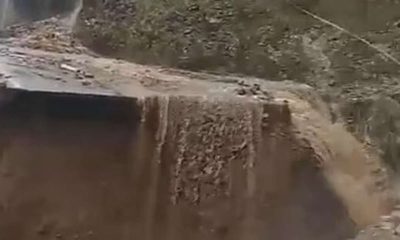
 India News1 hour ago
India News1 hour agoLandslide hits Arunachal Pradesh, highway linking Indo-China border affected





